Abstract
A theoretical model is presented for the early currents in the voltage clamp of cardiac muscle using the single sucrose gap technique. The preparation is represented by a single one-dimensional active cable with modified Hodgkin-Huxley membrane and the interent imperfections in the technique are also included, e.g., leakage through the sucrose gap and resistance in series with the membrane in the test compartment. The stability of the control system was found to depend on the position of the control point with respect to the sucrose gap border. Computed currents for a stable system closely resembled those in the literature and those from a near-ideal system (e.g., squid axon.) The potential immediately across the membrane, however (not including potential drops across the series resistance external to the membrane), was found to be essentially uncontrolled and the “current-voltage” relationship was shown to be almost independent of membrane properties.
Full text
PDF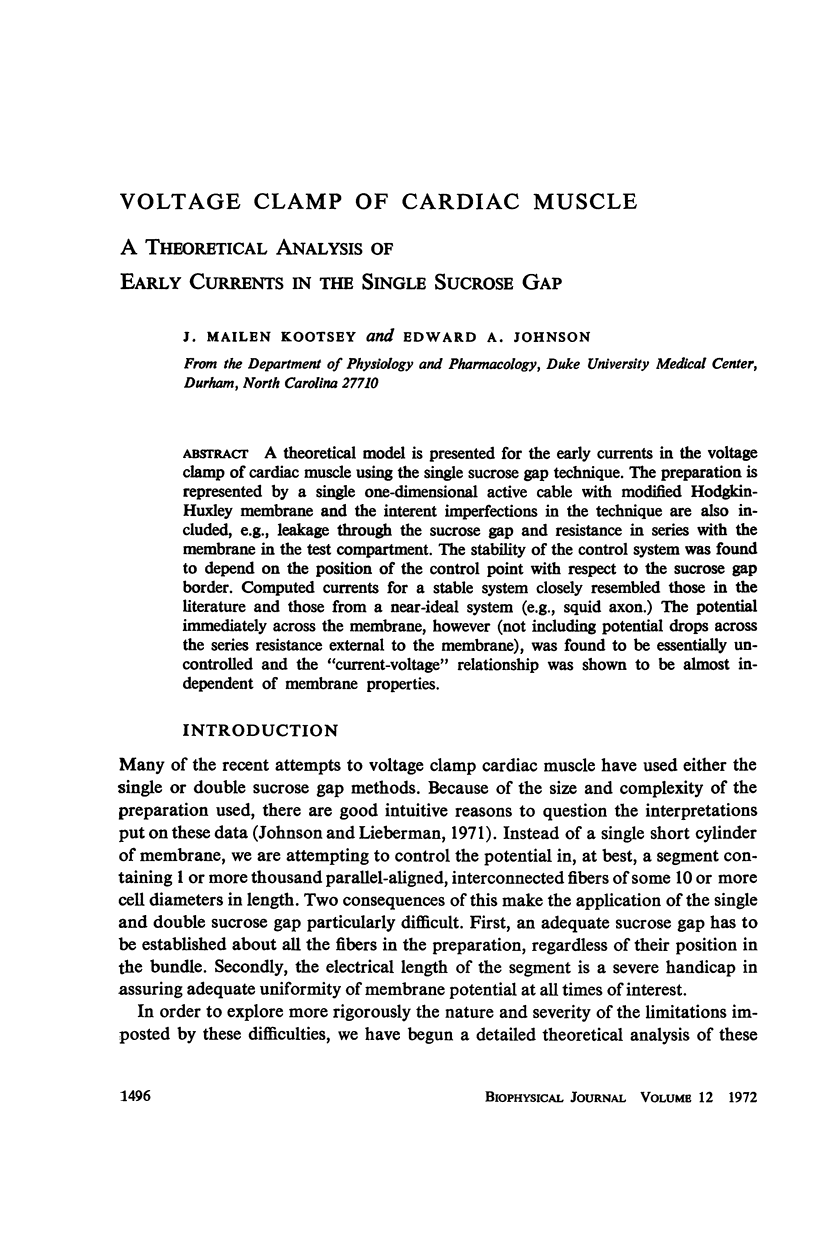
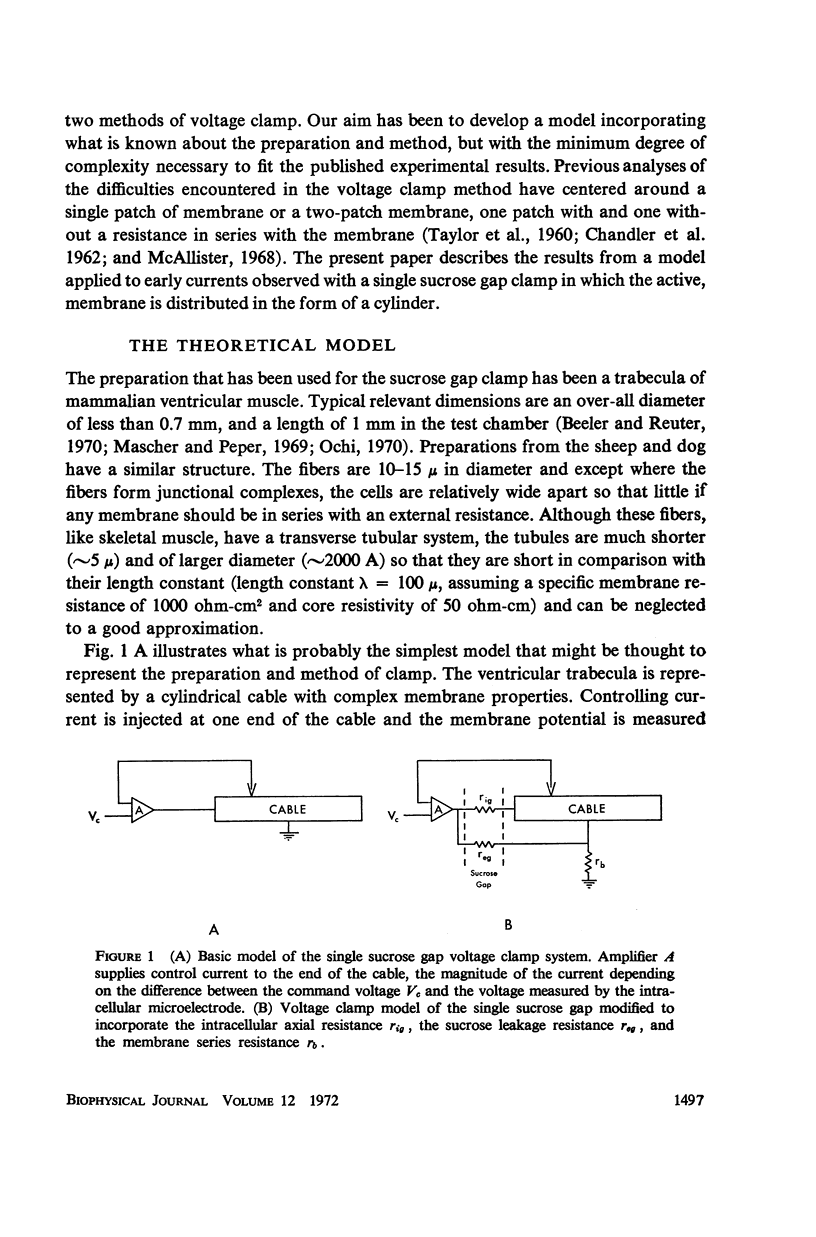
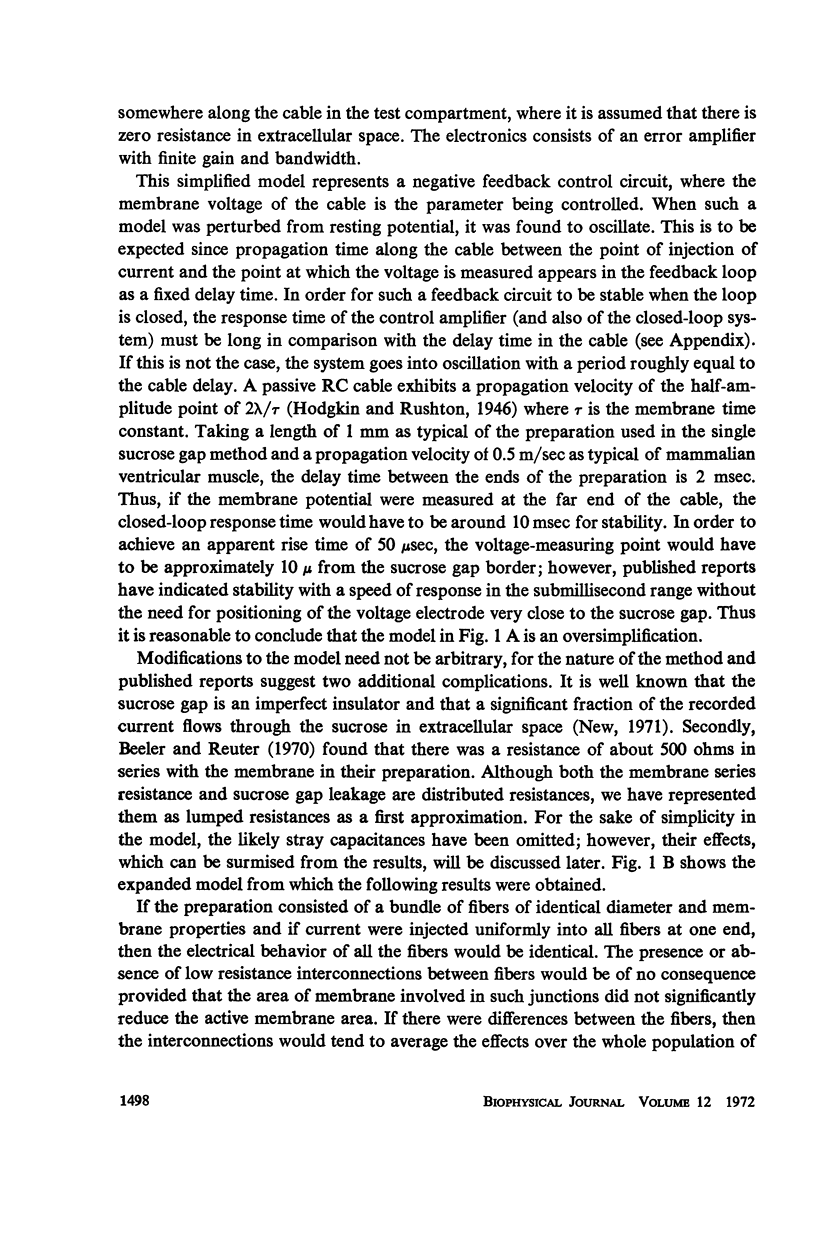
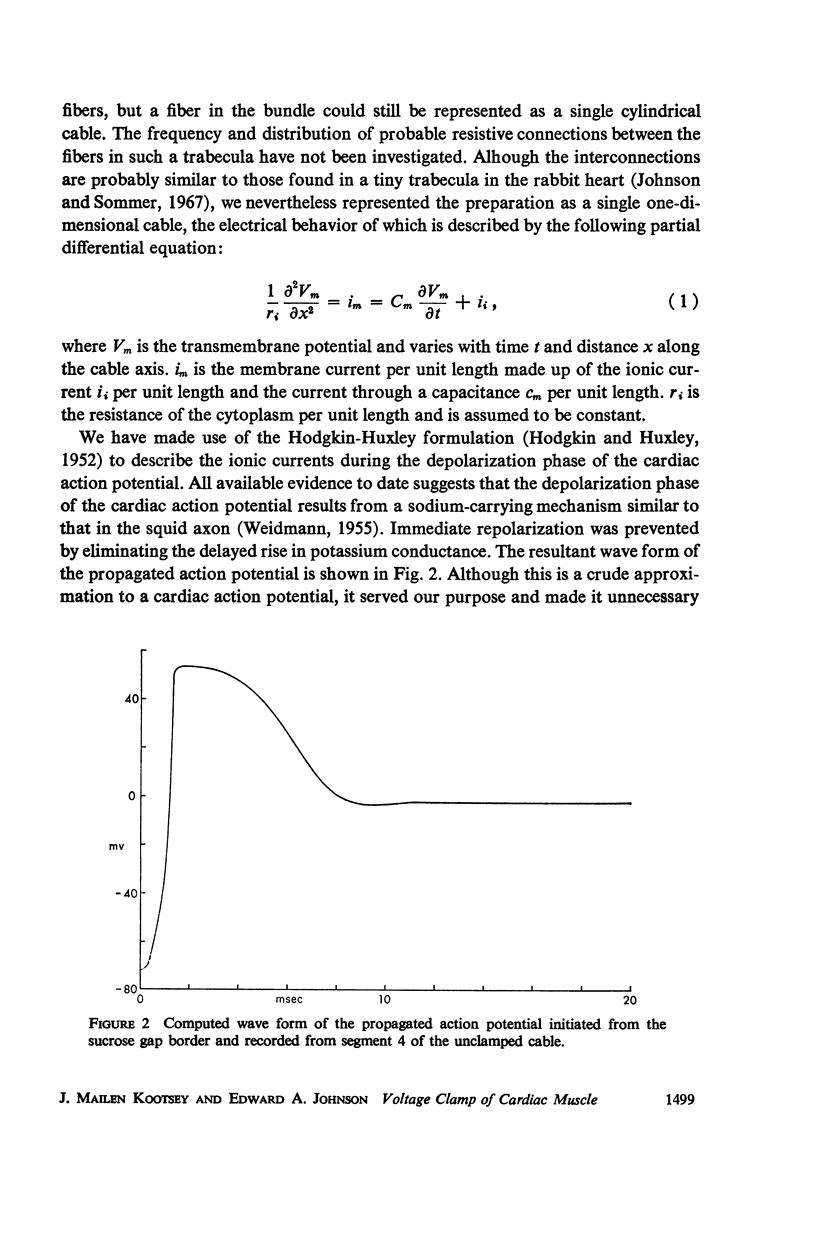
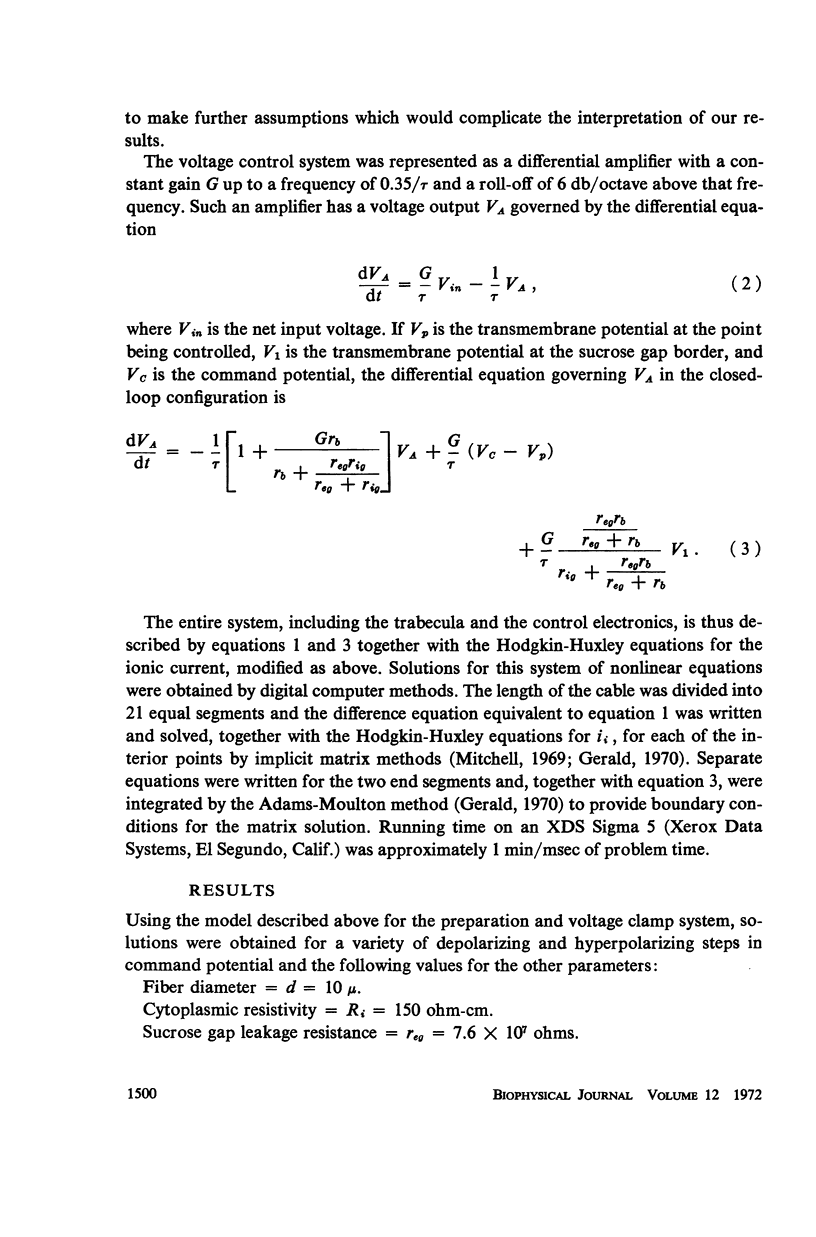
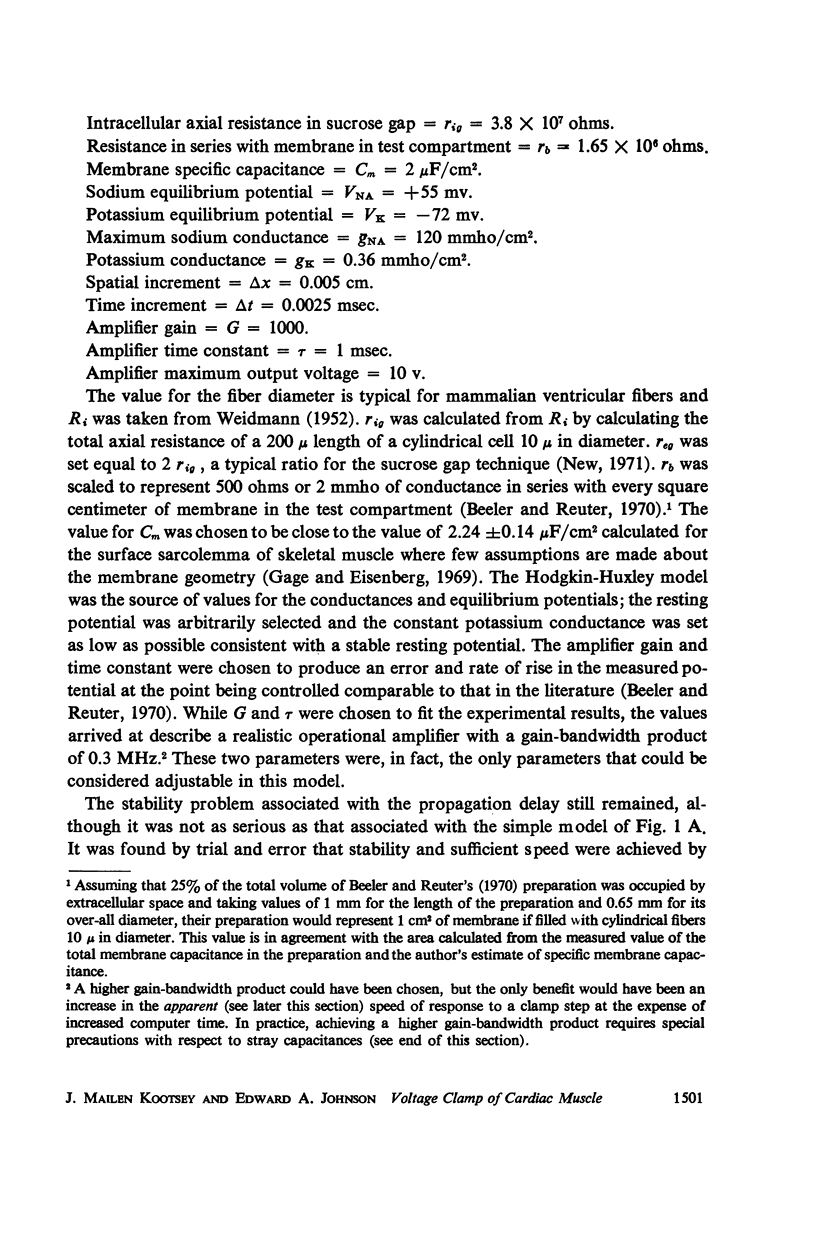
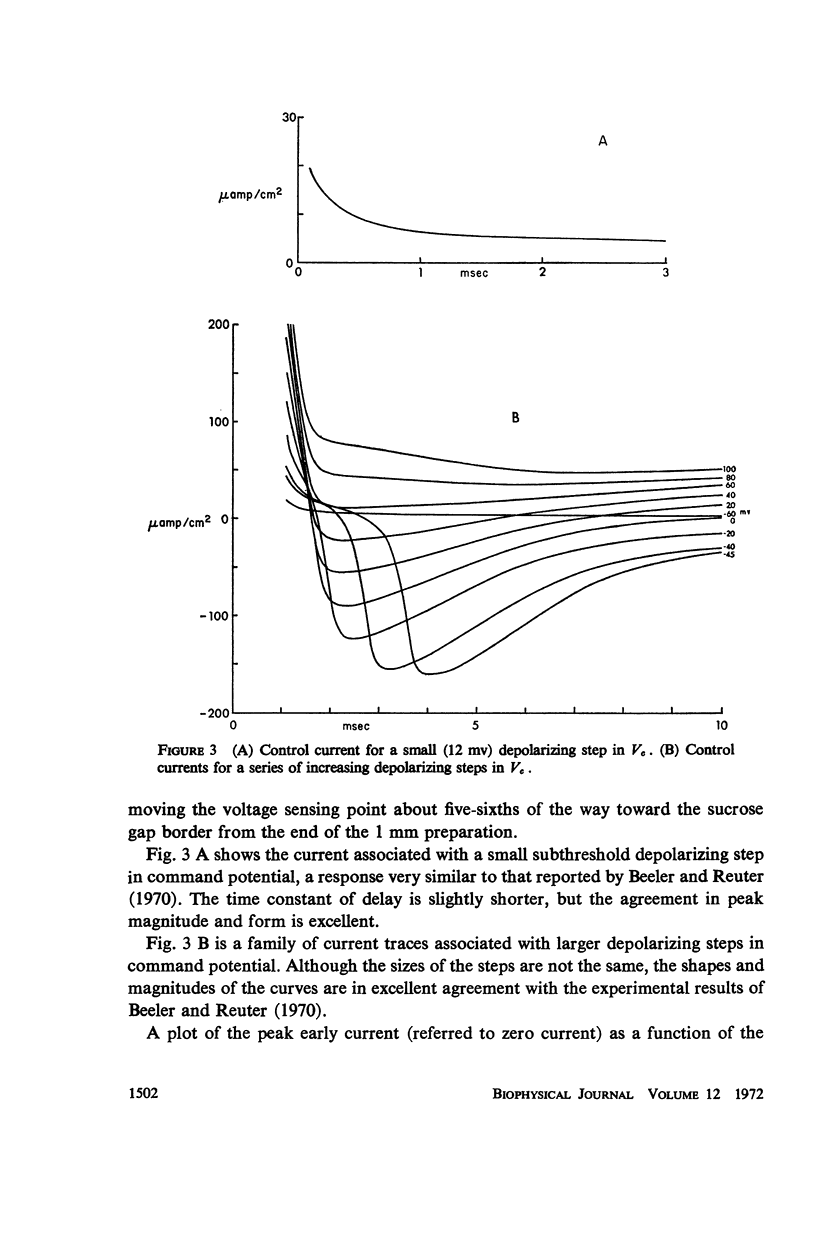
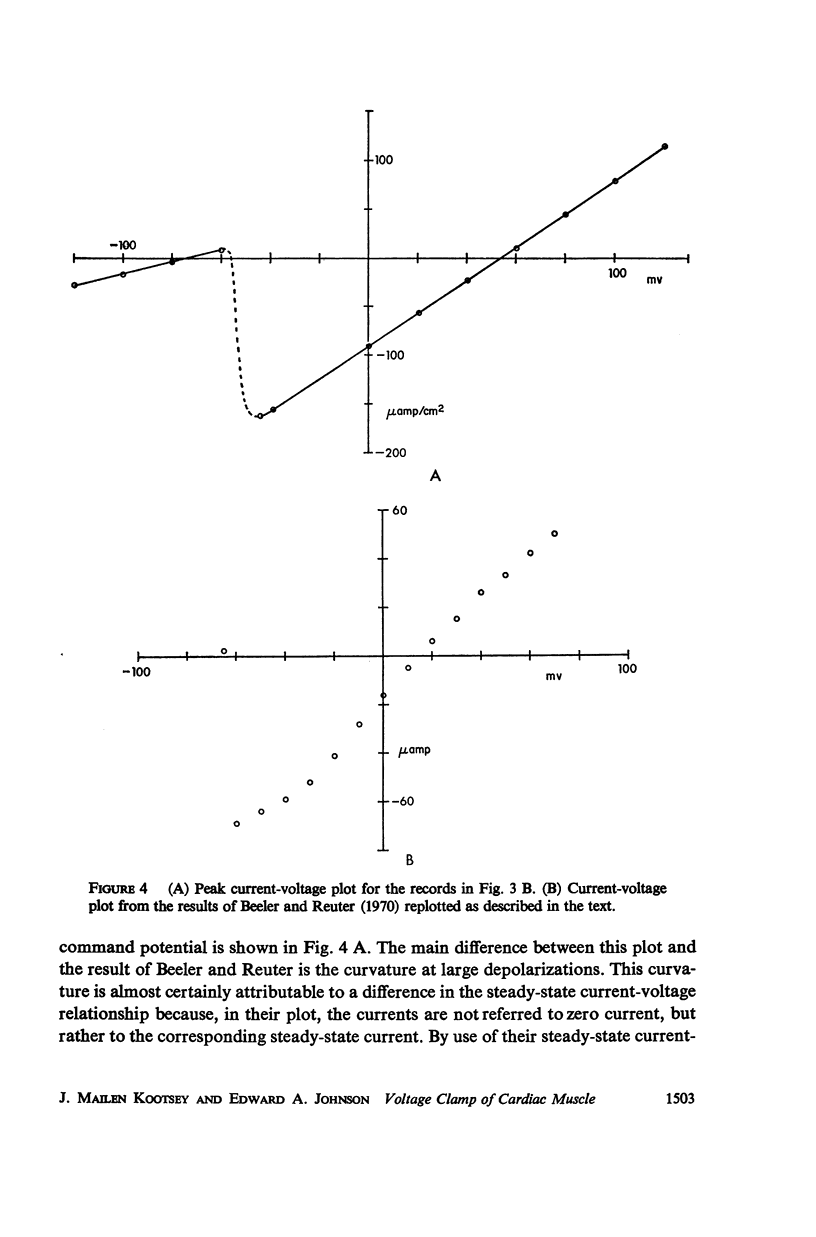
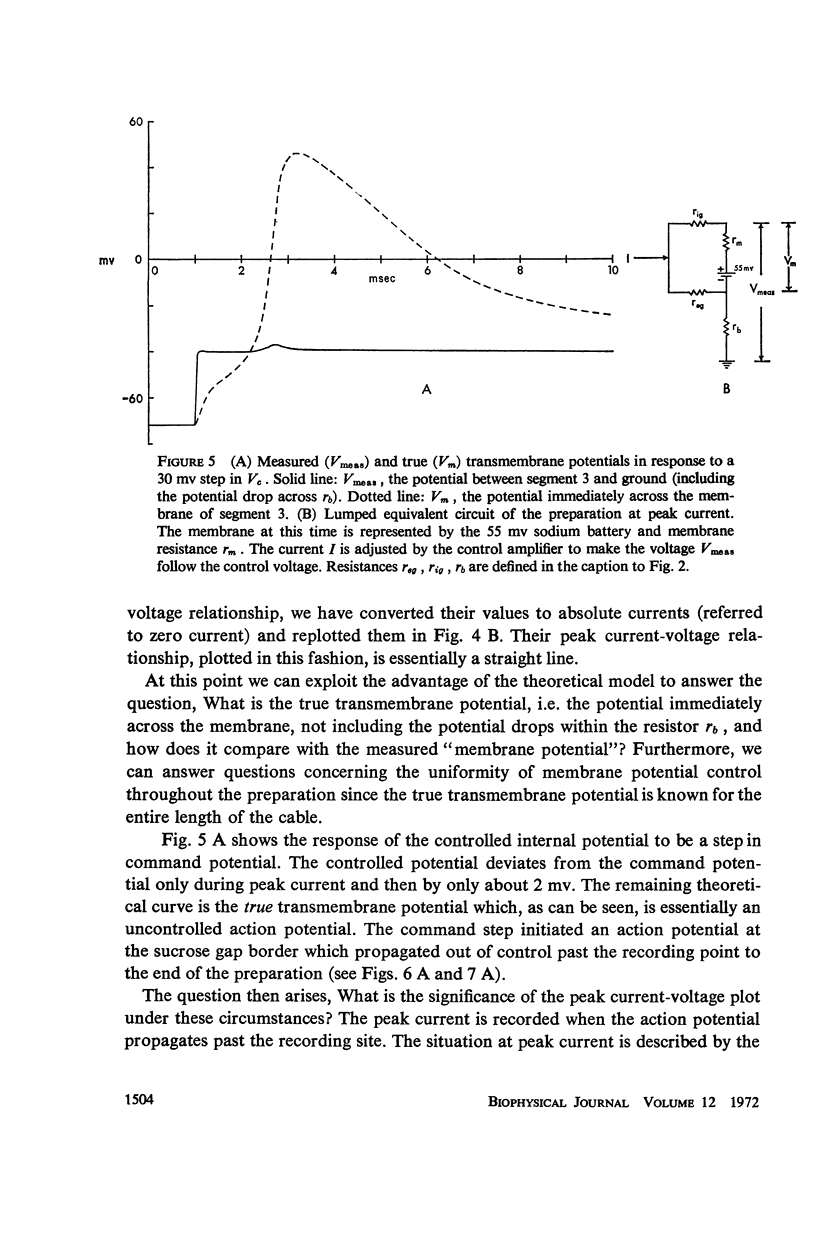
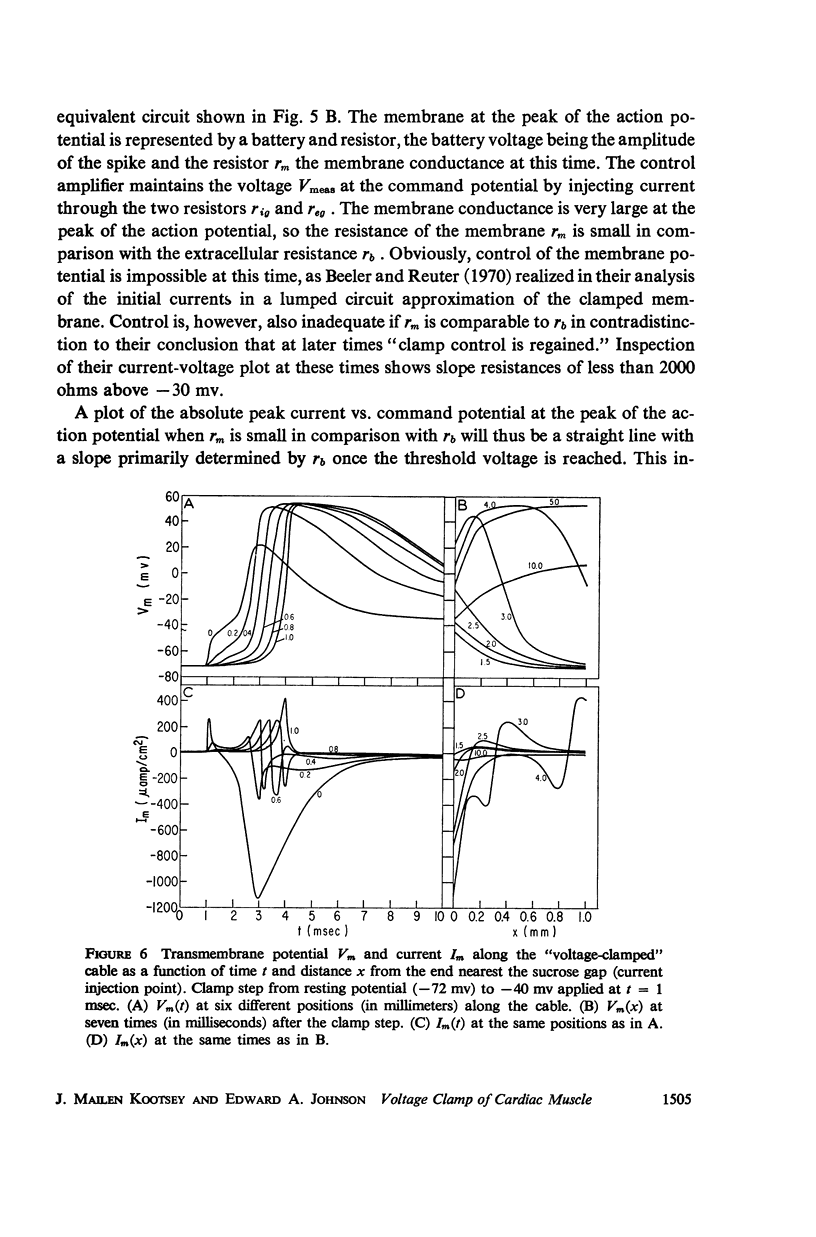
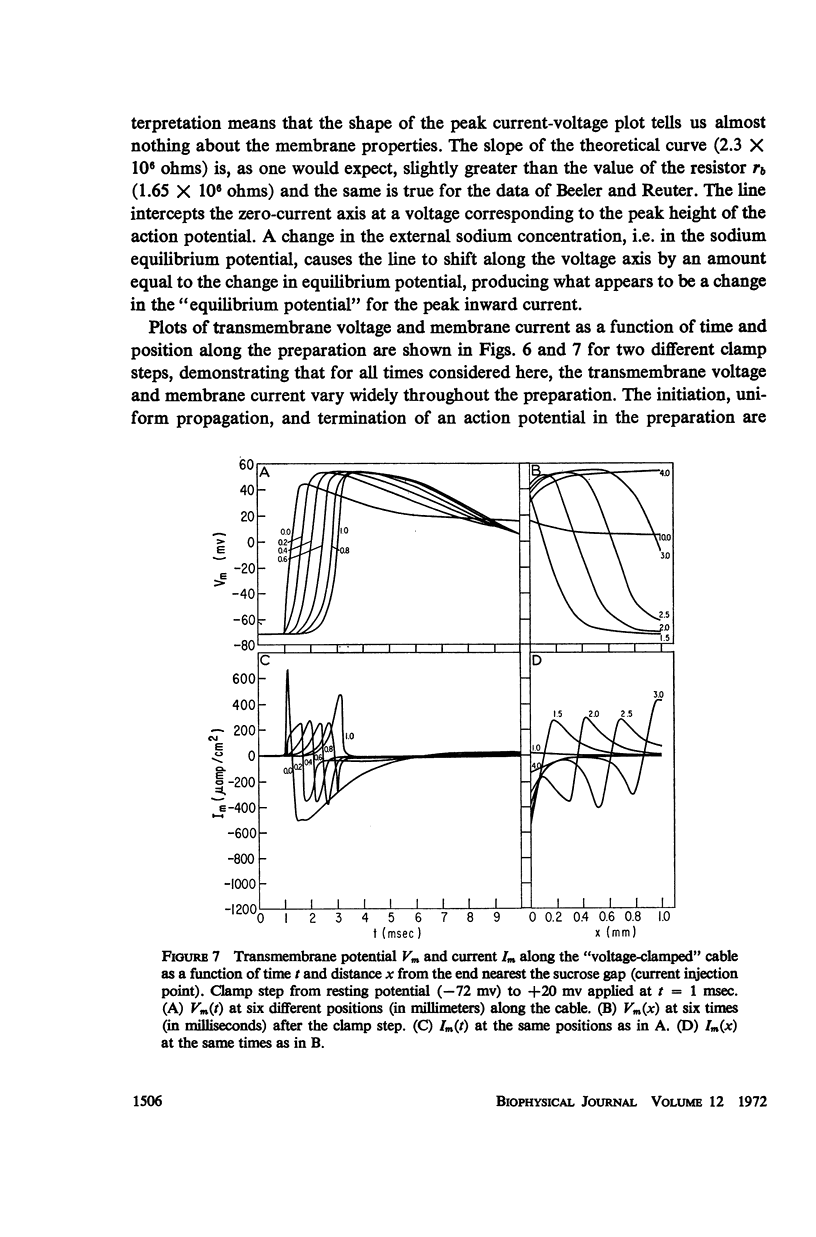
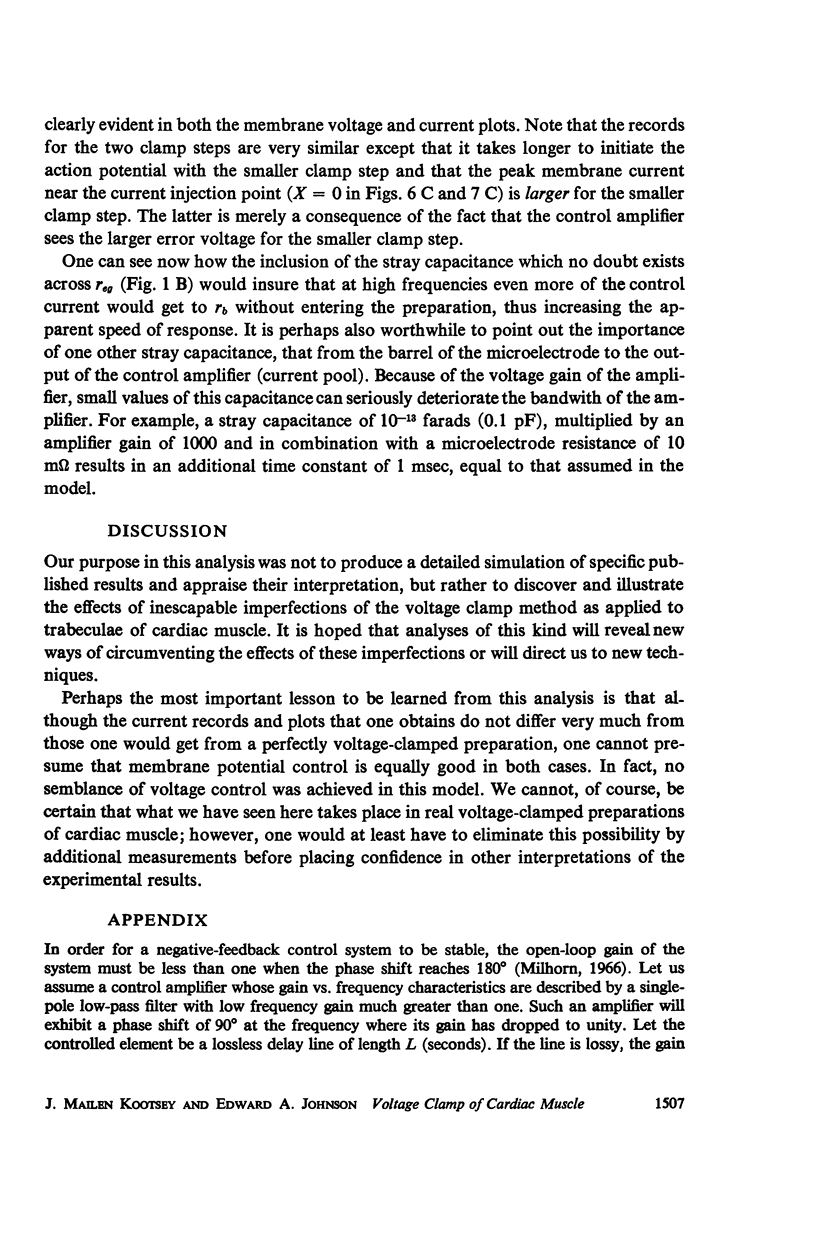
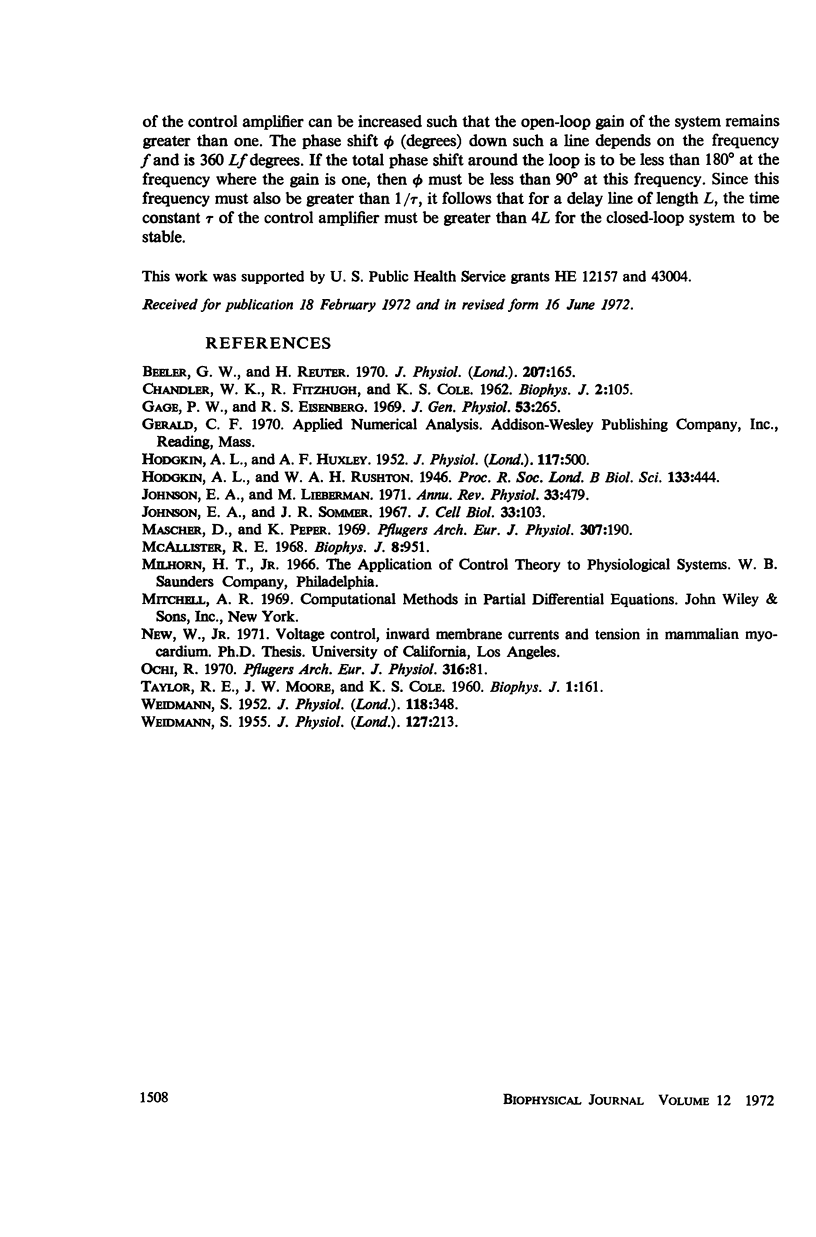
Selected References
These references are in PubMed. This may not be the complete list of references from this article.
- CHANDLER W. K., FITZHUGH R., COLE K. S. Theoretical stability properties of a space-clamped axon. Biophys J. 1962 Mar;2:105–127. doi: 10.1016/s0006-3495(62)86844-1. [DOI] [PMC free article] [PubMed] [Google Scholar]
- Gage P. W., Eisenberg R. S. Capacitance of the surface and transverse tubular membrane of frog sartorius muscle fibers. J Gen Physiol. 1969 Mar;53(3):265–278. doi: 10.1085/jgp.53.3.265. [DOI] [PMC free article] [PubMed] [Google Scholar]
- HODGKIN A. L., HUXLEY A. F. A quantitative description of membrane current and its application to conduction and excitation in nerve. J Physiol. 1952 Aug;117(4):500–544. doi: 10.1113/jphysiol.1952.sp004764. [DOI] [PMC free article] [PubMed] [Google Scholar]
- Mascher D., Peper K. Two components of inward current in myocardial muscle fibers. Pflugers Arch. 1969;307(3):190–203. doi: 10.1007/BF00592084. [DOI] [PubMed] [Google Scholar]
- McAllister R. E. Computed action potentials for Purkinje fiber membranes with resistance and capacitance in series. Biophys J. 1968 Aug;8(8):951–964. doi: 10.1016/S0006-3495(68)86530-0. [DOI] [PMC free article] [PubMed] [Google Scholar]
- Ochi R. The slow inward current and the action of manganese ions in guinea-pig's myocardium. Pflugers Arch. 1970;316(1):81–94. doi: 10.1007/BF00587898. [DOI] [PubMed] [Google Scholar]
- TAYLOR R. E., MOORE J. W., COLE K. S. Analysis of certain errors in squid axon voltage clamp measurements. Biophys J. 1960 Nov;1:161–202. doi: 10.1016/s0006-3495(60)86882-8. [DOI] [PMC free article] [PubMed] [Google Scholar]
- WEIDMANN S. The effect of the cardiac membrane potential on the rapid availability of the sodium-carrying system. J Physiol. 1955 Jan 28;127(1):213–224. doi: 10.1113/jphysiol.1955.sp005250. [DOI] [PMC free article] [PubMed] [Google Scholar]


